Diseases
Plant diseases are biotic and abiotic agents that prevent a plant from reaching its maximum potential. Abiotic issues can include environmental or cultural problems while biotic diseases are caused by plant pathogens like fungi, bacteria, or virus. Some plant pathogens cause very mild symptoms while others cause extreme economic and environmental damage.
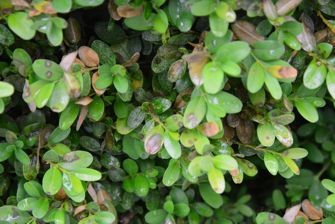
Boxwood blight is a fungal disease affecting multiple varieties of boxwood. Boxwood blight was first identified in the United States in 2011. For general information on this pest please visit these links:
- Boxwood Blight Quarantine (PDF)
- Boxwood Shipping Notification Form
- Boxwood Blight Pest Best Management Practices (PDF)
- 2021 Boxwood Blight Cleanliness Program Participants (PDF)
- Boxwood Blight Task Force - Virginia Cooperative Extension
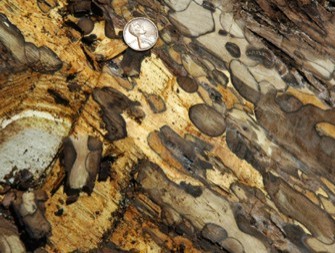
Thousand Cankers Disease (TCD) poses a serious problem to the health of the black walnut tree. Walnut trees are important because of their nut crop and the desired wood for various products. TCD is a progressive disease that kills a tree within two to three years after initial infection. The disease-causing fungus, Geosmithia, is transmitted by a small twig beetle. Branches and trunk tissue are killed by repeated infections by the fungus, as the beetles carry the fungus into new bark cambium tissue.
Cures for TCD have not yet been identified and their development will require better understanding of the biology of the walnut twig beetle and the canker-producing Geosmithia sp. Rapid detection and removal of infected trees currently remains the primary means of managing thousand cankers disease.
TDA officials urge area residents and visitors to help prevent the spread of TCD:
- Don't transport firewood, even within Tennessee. Don't bring firewood along for camping trips; get the wood from a local source. Don't bring wood home with you.
- Don't buy or move firewood from outside the state. If someone comes to your door selling firewood, ask them about the source, and don't buy wood from outside the state.
- Watch for signs of infestation in your walnut trees. If you suspect your walnut tree could be infected with TCD, refer to the TCD Symptoms Checklist and online TCD Report Form to alert state plant and forestry officials, or call TDA's Consumer and Industry Services Division at 1-800-628-2631.
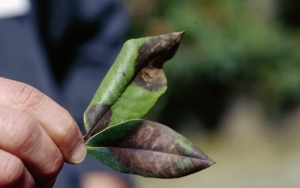
Sudden Oak Death surveys are being conducted throughout the United States to determine if sudden oak death has been shipped in from the western states. Currently in Tennessee, there are no known occurrences of Sudden Oak Death. For information on SOD in other areas of the country please follow the link below. Phytophthora ramorum - https://www.aphis.usda.gov/plant-pests-diseases/pramorum
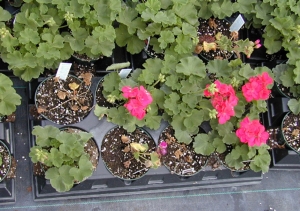
Ralstonia has been detected in a few greenhouses in Tennessee. Each detection was isolated and traced back to the original source overseas. The plants were destroyed by incineration or burial in a landfill 6 feet deep. Suggested procedures were also followed to sanitize the affected greenhouses. Currently there are no known cases of Ralstonia in Tennessee.
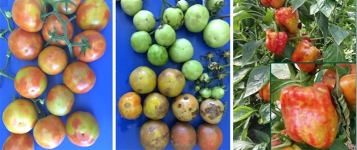
Tomato brown rugose fruit virus (ToBRFV) is making headlines and eliciting USDA action. Growers need to learn more about ToBRFV biology, symptoms and control. This virus is similar to other mosaic viruses however plants lack genetic resistance.
Leaf symptoms of ToBRFV include wrinkling and bubbling with an accompanying mosaic pattern. Fruit has a browning calyx and is undersized with a rough surface (rugose means wrinkled). Fruit abortion may occur while remaining fruit will be blotchy, pale and may have brown, necrotic spots. Plants infected early will be stunted with poorly formed fruit. Plants infected later may not express fruit symptoms until the fruit turns red.
This virus spreads mechanically through people and equipment touching infected plants and transferring it to a healthy plant. ToBRFV is very stable and very infectious. It has high mechanical infectivity, which is concerning since tomato and pepper plants are highly manipulated through transplanting, staking, tying, pruning and harvesting.
A high degree of sanitation is the key to avoidance. There are no sprays that can be applied that are effective in reducing the virus’s spread. Seed and transplant production are the most critical steps since contamination at these steps creates a risk of contaminating other plants.
https://www.aphis.usda.gov/plant-pests-diseases/tbrfv/faqs
Read more:
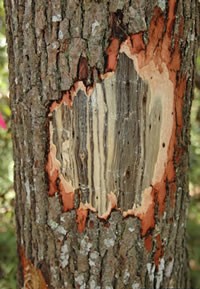
Laurel wilt is a insect disease complex caused by the Redbay Ambrosia Beetle, Xyleborus glabratus, spreading the fungal pathogen Raffaellea lauricola. The fungus causes death in the vascular tissue disrupting the transportation of nutrients throughout the tree.
All plant species in the family Lauraceae native to North America are susceptible to the laurel wilt fungus. Field occurrence of laurel wilt has been documented in redbay, swamp bay (Persea palustris), silk bay (Persea humilis), sassafras, northern spicebush (Lindera benzoin), pondberry (Lindera melissifolia), and pondspice (Litsea aestivalis). Laurel wilt has been induced through artificial inoculation of additional species including California bay laurel, pepperleaf sweetwood (Licaria triandra) and lancewood (Nectandra coriacea). Other lauraceous species that are not native to North America such as avocado, camphortree (Cinnamomum camphora) and bay laurel (Laurus nobilis) are also susceptible to wilt. Not all of these species are equally vulnerable to the disease nor equally attractive to the redbay ambrosia beetle. Plants that have “laurel” or “bay” in their common names but are not in the family Lauraceae, such as mountain laurel (Kalmia latifolia), sweetbay (Magnolia virginiana) and loblolly bay (Gordonia lasianthus), are not susceptible to laurel wilt.
Symptoms vary depending on host species. Plants with laurel wilt have leaves that droop. Leaves turn reddish or purplish, eventually turn brown and die. Redbay leaves change color and remain attached for a year or more. At first, you may only see symptoms in a portion of the crown, but gradually the entire crown becomes discolored and wilts. Remove the bark on a laurel wilt infected plant to find dark-streaked discoloration on the surface of the sapwood. This discoloration can also be seen in cross-section. In advanced stages of the laurel wilt disease, signs of the redbay ambrosia beetle may be evident. Look for tiny exit holes, sawdust or sawdust tubes that remain intact on the bark of trees.
Read more:
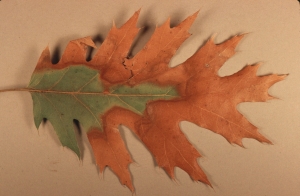
Xylella fastidiosa.
This pathogen causes several bacterial diseases including bacterial leaf scorch, phony peach disease, and Pierce's disease of grapevine. This bacterium is spread by leafhoppers and treehopper insects as well as through root grafting of neighboring plants. This fatal disease is most noticeable in the early fall. Symptoms include premature leaf browning, marginal necrosis and defoliation. This pathogen has many subspecies allowing a wide host range including trees, grasses, and shrubs. Its known host range is 595 plant species. Plants of commercial importance include Grapes, Peaches, and Olives.
Read More: